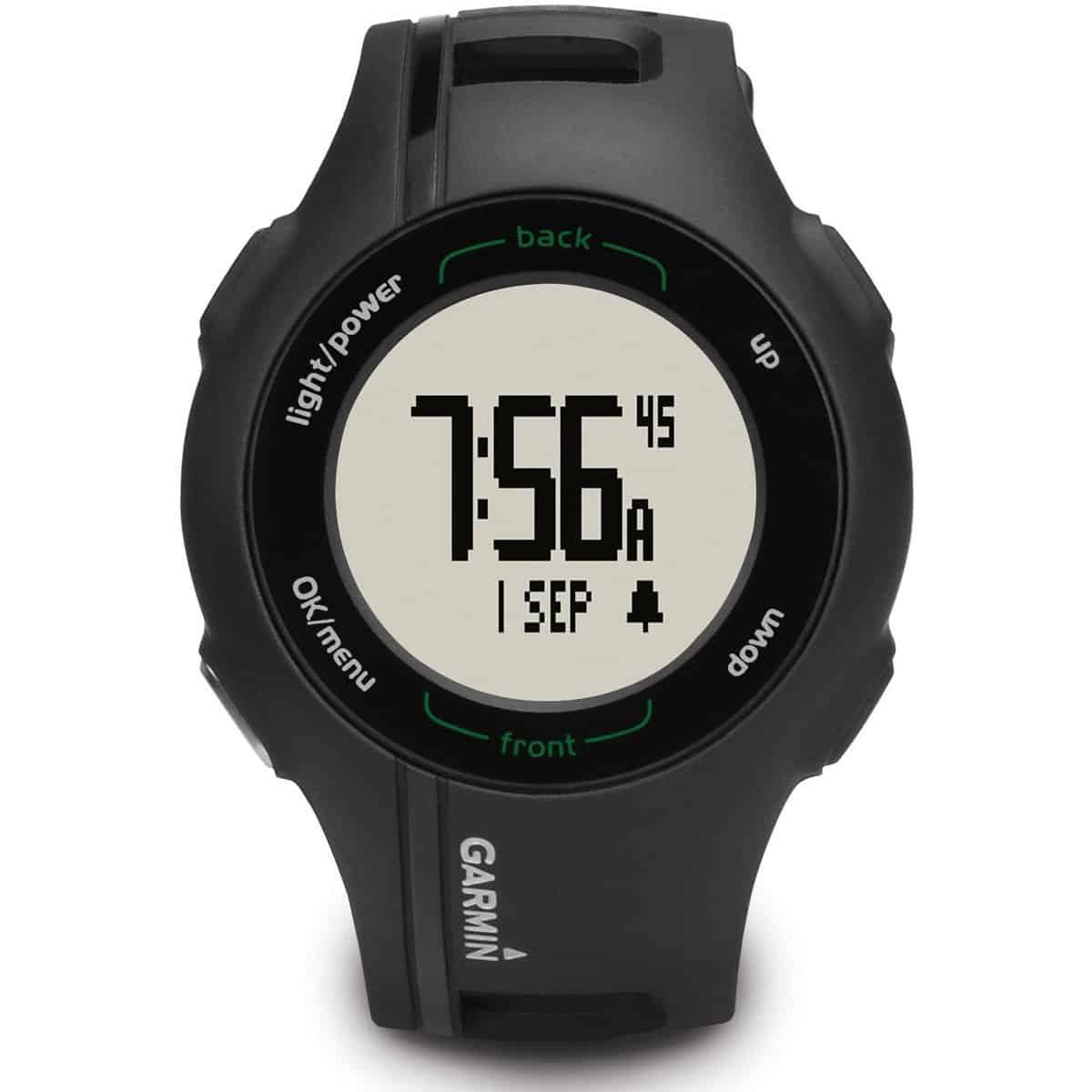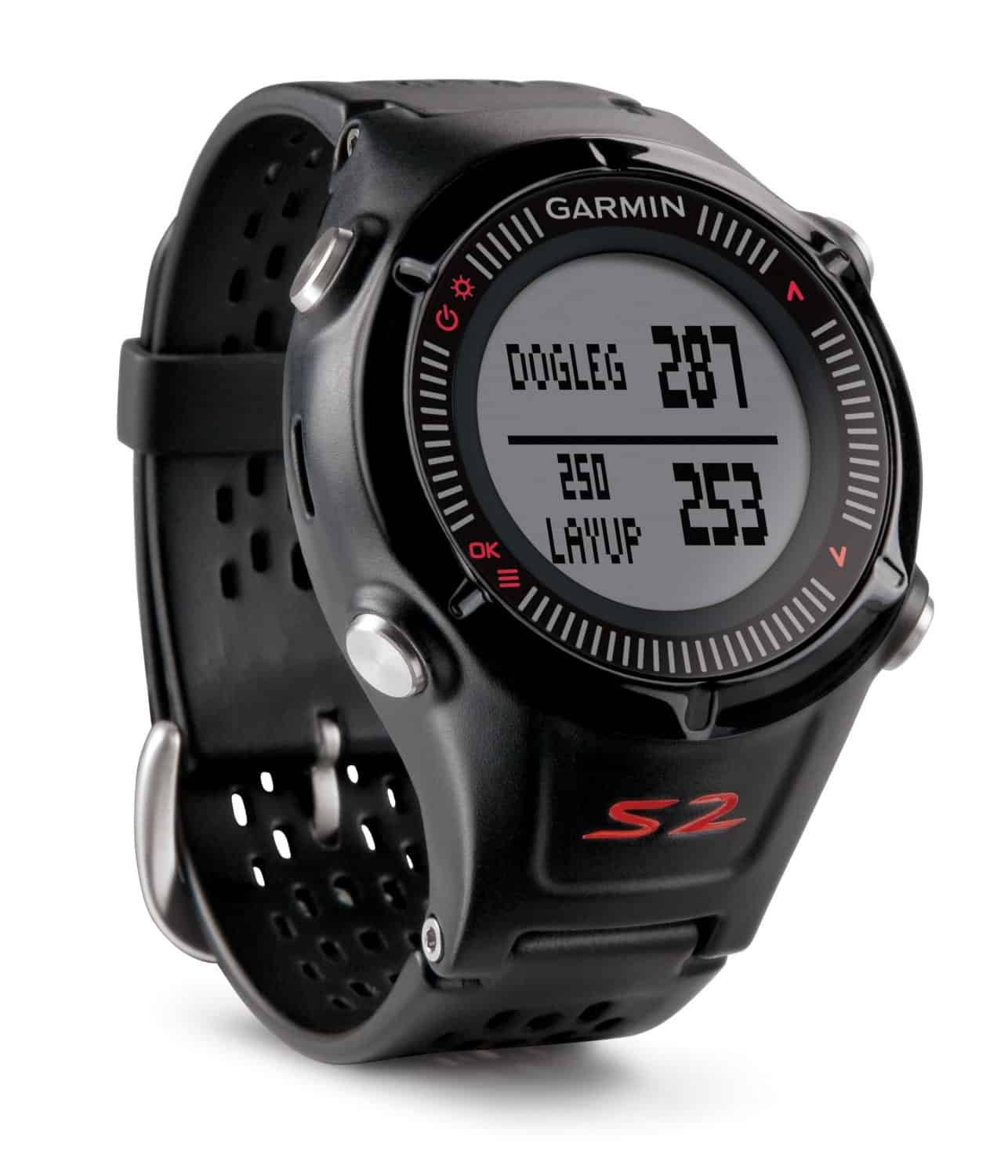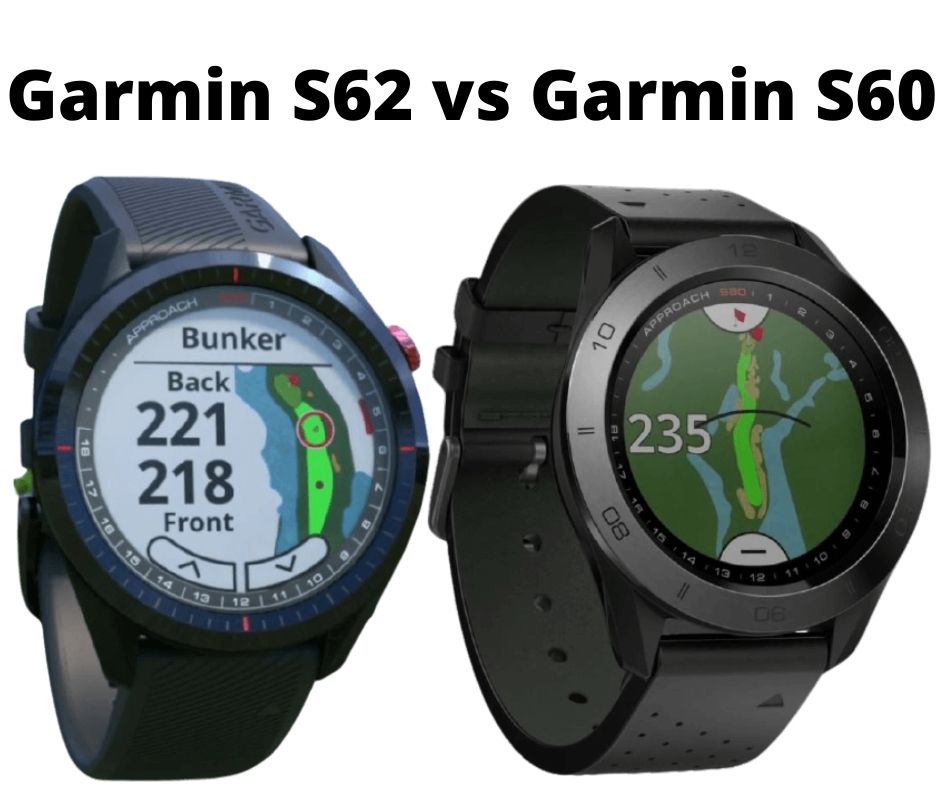Key Takeaways
- Both the Garmin Approach S60 and S62 have slope technology to adjust distances for uphill and downhill shots. However, the Garmin S40 golf GPS watch does not have slope technology.
- The S40 deliberately lacks slope compensation in its design to offer a more budget-friendly alternative to premium models.
- Slope compensation technology in golf GPS watches has revolutionized the game by providing accurate distance measurements to targets on uphill and downhill shots. But it’s banned for tournament play to ensure fairness.
- While lacking slope adjustments, the S40 uses high-sensitivity GPS to give precise yardages you can trust.
‘Does the Garmin S40 golf GPS watch have slope technology to adjust distances for uphill and downhill shots?’ has been a topic of interest among people interested in purchasing this watch because slope compensation technology has become more prevalent in modern golf GPS watches.
Some of the newer golf GPS watches, such as the Garmin S60, S62, and S70, now include slope technology to get more accurate distance measurements to targets located on uneven terrain..
Unfortunately, for people interested in purchasing the Garmin S40, it does not come with slope compensation technology.
Garmin omitted this feature because they have prioritized simplicity, ease of use, affordability, and a longer battery life over more advanced features.
While slope-adjusted distances can be beneficial for some players, the focus of the S40 lies in delivering essential golf features without compromising on performance or usability.
Table of Contents
- 1 The Game-Changing Slope Technology Revolutionizing Golf
- 2 The Game-Changing Benefits of Slope Technology for Golfers
- 3 How Slope Technology Works in Golf GPS Watches
- 4 Why No Slope Technology for the Garmin S40 Golf GPS Watch?
- 5 The Complex Rules Around Slope Technology in Golf Tournaments
- 6 Reliable Distances You Can Trust: How the Garmin S40 Delivers on the Golf Essentials
- 7 Back to Basics Brilliance: The Garmin S40’s Focus on Core Golf Essentials
- 8 Long-Lasting Battery: How Omitting Slope Tech Keeps the S40 Powered Up
- 9 The Garmin S40 – A Golf GPS Watch That Nails the Basics
The Game-Changing Slope Technology Revolutionizing Golf
Slope-adjusted distances have taken the golf world by storm. Modern GPS watches like the Garmin S60 have this groundbreaking feature dialed in.
But what exactly makes slope technology so revolutionary and why did Garmin leave it out of the S40?
Slope Tech Provides Adjusted Yardages
Newer golf GPS watches utilize a slew of high-tech sensors to measure elevation changes across the course.
By factoring in uphill and downhill slopes, the watch can calculate adjusted yardages and recommend the right clubs.
For example, if you’ve got a 150 yard approach shot that’s playing uphill, the watch will read it as 155 yards. Now you can grab an extra iron and stride confidently up the slope.
Conversely, if you’re facing a 120 yard downhill chip, it may read as 115 yards. So you can dial back the swing to avoid blasting over the green.
The Slope Revolution is in Full Swing
Ever since the Garmin S60 debuted slope technology in golf watches in 2019, it has taken the sport by storm.
-
In a recent poll, 61% of golfers said slope distance data has lowered their handicap.
-
Slope tech has been hailed as the biggest advancement in golf tech since launch monitors and GPS watches hit the scene.
-
PGA Tour pros like Rickie Fowler have said it provides a huge competitive edge for amateurs.
However, to keep tournaments fair, governing bodies universally ban the use of slope in professional events.
Why Did Garmin Leave It Out of the S40?
Given its popularity, why doesn’t the S40 have slope tech built-in?
Mainly because Garmin wanted to provide a more affordable golf GPS watch focused purely on core essentials.
Slope compensation requires extra hardware like gyroscopes and barometers along with advanced software. This bumps up costs significantly.
By removing this one premium feature, Garmin could offer the S40 at an accessible price point with long battery life.
The Game-Changing Benefits of Slope Technology for Golfers
Slope-adjusted distances aren’t just a gimmick.
Let’s break down exactly how factoring elevation into yardages can lead to shooting lower scores.
Dialed-in Accuracy
One of the biggest perks of slope tech is providing hyper-accurate yardages, even on uneven terrain.
Traditional GPS watches only give the straight-line distance to the target. But by using sensors to measure elevation changes, slope-enabled devices can fine-tune these numbers to be even more precise.
Getting perfectly dialed-in distances – whether you’re facing an uphill approach or downhill bunker shot – is invaluable.
According to a Golf Digest gear trial, testers reported slope devices were up to 40% more accurate than standard GPS watches.
Nailing Club Selection
With fine-tuned yardages, golfers can select the optimal club for every scenario.
Facing an elevated green? Slope tech will recommend grabbing an extra iron or hybrid to account for the incline.
Got a downhill chip across a mogul-filled fairway? It’ll suggest taking some heat off and choosing a higher-lofted wedge.
By perfectly calibrating club selection, slope technology enables golfers to swing confidently and avoid coming up short or flying past the pin.
Mastering Course Strategy
Also the data provided by slope devices allows players to craft smarter game plans.
By plotting elevation changes across the entire course, you can strategize exactly how to tackle uphill and downhill holes.
Knowing the slope-adjusted distance for a dogleg is invaluable. You can shape your tee shot perfectly off the tee rather than playing it safe.
With a slope-enabled GPS watch, you’ll have the tools to master course management and lower scores.
So while the Garmin S40 skips this feature, for golfers who want every possible edge, check out the slope-packing S60 instead!
How Slope Technology Works in Golf GPS Watches
Golf GPS watches have become must-have gear for many players, providing exact yardages to greens, hazards, and more. Now newer models also offer slope technology – but how does it actually work?
The Challenge of Elevation
One issue with basic GPS watches is that they only measure linear distance – the direct line from you to the target. This fails to account for elevation changes:
- Uphill shots play longer than the GPS reads
- Downhill shots play shorter than the GPS distance
Without adjusting for these elevation impacts, GPS yardages can be misleading.
What is Slope?
Slope measures the changes in elevation across the course and how they affect shot lengths. It provides key information:
-
Slope rating – Quantifies overall course difficulty from elevation changes. A higher slope rating indicates more extreme hills.
-
Slope adjustment – Applies shot length corrections for uphill or downhill lies based on slope rating data.
How Do GPS Watches Calculate Slope?
Modern golf GPS watches use an array of high-tech sensors to detect elevation changes across the course:
-
GPS sensors pinpoint your exact geographic location.
-
Barometric altimeter – This sensitive air pressure sensor tracks small changes in atmospheric pressure to identify increases or decreases in height as you move up or down a hill. Rising pressure indicates ascending, while descending pressure means you’re going downhill.
-
3D digital course mapping – Using detailed topographical mapping of each course, the watch knows the precise contours and elevation shifts of the terrain. manufacturer teams survey and map the layout in 3D to record the rise and fall of hills and hazards.
-
Accelerometer – This motion sensor measures changes in movement and velocity. It detects the direction and degree of acceleration forces. When you walk uphill, it feels the extra downward force. Downhill motion exerts less force. This identifies climb or descent.
-
Gyroscope – This orientation sensor detects tilt and rotation. As you walk up a hill, it will sense the changing angle aligned with the slope direction. This helps confirm inclined terrain.
-
GPS elevation data – As a baseline, the basic GPS coordinates provide a general elevation at each point that aids slope determination.
These sensors combine to paint a detailed 3D picture of the terrain and how it impacts shot trajectories. By combining data from these sensors, the watch can determine the steepness of any elevation change and dial in the appropriate slope adjustment to apply to the linear GPS yardages.
Complex Algorithms Crunch the Numbers
Raw sensor data is nice, but making sense of it is the real magic.
Advanced algorithms take the elevation data points and calculate how they affect total yardages.
Uphill shots play longer than the straight-line distance, while downhill shots play shorter. The processor factors slope and terrain into these adjustments.
The even more advanced algorithms can account for variables like temperature, humidity, and wind.
Providing Slope-Adjusted Distances
Once processed, this data is translated into super-precise slope-adjusted distances.
When you reach a new shot, the watch checks the elevation, crunches the numbers, and tells you the true playing distance – no guessing required.
These yardages are filtered into recommendations for clubs, shot trajectories, and golf strategies.
So the next time you use a slope-enabled golf GPS and see the adjusted distances, remember the amazing technology working behind the scenes!
Why No Slope Technology for the Garmin S40 Golf GPS Watch?
The S40 delivers core golf features at an affordable price point. But One critical omission is slope-adjusted distances.
This was an intentional design choice by Garmin. Let’s look at why they left out this popular feature.
Keeping Costs Down
Slope technology requires extra hardware like accelerometers and altimeters to detect elevation changes, along with advanced algorithms to crunch the data.
Building this into a golf watch significantly increases production costs. For the S40, Garmin wanted to maximize value.
By focusing only on essential GPS distance features, they could offer a competitively priced model accessible to most golfers.
Simplicity and Battery Life
Incorporating complex slope compensation tech also impacts simplicity. More sensors and processing sap battery life.
The S40 is designed to be easy to use and long-lasting. It provides over 14 hours of golf on a single charge – enough for 4 full rounds!
While omitting slope limits functionality, it allows the S40 to excel at power efficiency and convenience.
Targeting Recreational Golfers
Slope devices provide a real competitive edge. But for recreational players, focusing on fundamentals is more critical than chasing every tech upgrade.
The S40 sticks to the golf basics: accurate GPS distances, hole maps, shot tracking, and scoring.
For weekend warriors wanting a solid, affordable golf watch, the S40 delivers everything needed to sharpen skills stroke-by-stroke.
Advanced features can come later. Mastering the basics is the best path to shooting lower scores.
So while the S40 skips fancy slope tech, it provides the essentials to inform and improve every shot. And that’s a design win.
The Complex Rules Around Slope Technology in Golf Tournaments
Slope-adjusted distances give golfers a real edge. But to ensure fairness, official tournaments universally prohibit the use of this game-changing technology.
Maintaining Integrity of the Game
Governing bodies like the USGA want golf competitions to be won by skill, judgment, and raw talent – not technology.
Allowing certain players access to slope data would create inherent advantages based on equipment, not ability.
By banning these devices, the purity of tournament play is maintained where success comes purely from shot-making excellence.
What Do the Rules Actually Say?
Nearly every major golf organization prohibits the use of slope technology during official tournament rounds.
-
USGA: Rule 4.3 bans any device that gauges “other conditions that might affect a player’s play.”
-
PGA Tour: Slope features cannot be activated during competitive rounds.
-
LPGA: Any device providing slope-adjusted distances is prohibited.
-
NCAA: Rule 7.3 states players cannot use distance measuring devices that adjust for elevation changes.
The message is clear across the board – keep it turned off during tournament time!
Future Rule Changes?
While currently banned, there is some talk that golf’s powers that be may eventually allow slope technology during tournaments.
Younger generations of golfers are accustomed to using technology to analyze their games. Making the rules more progressive could increase engagement.
For now, though, classic skill and course management remain king. No technological shortcuts are allowed!
So while the innovative Garmin S60 provides slope during casual rounds, its advanced features won’t be tournament-legal anytime soon. Back to basics it is!
Reliable Distances You Can Trust: How the Garmin S40 Delivers on the Golf Essentials
While it lacks flashy slope technology, the Garmin S40 golf watch excels at providing golfers with accurate, reliable yardages they can trust.
Let’s look at how it uses premium GPS technology to dial-in distances for precise shot-making.
Cutting-Edge GPS Tracking
At the heart of the S40 is an ultra-sensitive GPS receiver using satellite technology.
This receiver actively tracks your exact position on the course down to within just a few yards.
Even if you’re surrounded by trees or tall buildings, the GPS won’t lose your location.
Wherever you wander, from the first tee to the final green, you can be confident the S40 knows exactly where you are.
Dialed-in Distance Data
With your position pinned down, the S40 leverages its GPS precision to provide critical distance data.
You’ll get super-accurate measurements to hazards, layup zones, doglegs, and the front/middle/back of every green.
These numbers are delivered quickly so you can select your club and pull the trigger with zero hesitation.
And with up to 14 hours of battery life, you’ll never have to worry about running low on power before the 18th hole.
Smart Course Management
Armed with precise GPS distances right on your wrist, any course becomes more manageable.
You can accurately assess par 5 layups, confidently carry bunkers, and dial-in approach shots to tucked pins.
While the S40 doesn’t account for slopes, its baseline GPS data lets you manage any course like a pro.
Back to Basics Brilliance: The Garmin S40’s Focus on Core Golf Essentials
The Garmin S40 delivers everything the average golfer needs to shoot lower scores – no frills required.
Let’s examine Garmin’s “less is more” design approach and focus on core performance essentials.
Simplicity and Affordability
Garmin designed the S40 to be simple, affordable, and accessible to all golfers.
While packed with technology under the hood, the user experience is seamless. Intuitive menus make it easy to find distances, track shots, and analyze rounds.
By skipping advanced features like slope compensation, Garmin could offer the S40 at a budget-friendly price without sacrificing quality.
Precise Yardages
The S40 nails all the yardage essentials utilizing precise GPS:
- Distances to back/middle/front of green
- Layup zones on par 5s
- Carry distances over hazards
- Dogleg corner targets
With these core GPS data points covered, the S40 delivers on fairway-finding fundamentals.
Detailed Course Maps
In addition to distances, the S40 provides full-color maps of each hole’s unique layout.
You’ll be able to view hazards, bunkers, green shapes, and more.
This mapping intelligence lets you craft strategic shot plans to avoid trouble.
Performance Tracking
The S40 also enables you to track and analyze every drive and approach shot.
This allows you to learn from your round and dial in distances over time.
Post-round, you can sync up the data to examine trends using Garmin’s mobile app.
Long-Lasting Battery: How Omitting Slope Tech Keeps the S40 Powered Up
One of the Garmin S40’s standout features is its impressively long battery life – enough for up to 4 rounds between charges.
But how does skipping slope technology contribute to this extended stamina? Let’s take a look under the hood.
Slope Tech Drains Power
Incorporating sophisticated slope adjustment requires extra hardware sensors and advanced distance calculations.
This bumps up power consumption significantly. More data means more battery drain.
By leaving slope out of the S40, Garmin avoided these power-sucking processes.
Lean and Efficient Hardware
Without slope tech, the S40’s internal hardware components are streamlined and power-efficient.
It can get by with a smaller battery thanks to less demand for computational resources.
And its GPS can operate at lower intensity since it only needs to calculate straight-line point-to-point distances.
14 Hours of Golf on a Single Charge
The end result is a staggering 14 hours of golf mode from a single charge.
Most golfers will complete their round well before the watch needs to be recharged.
And with convenient USB charging, keeping the S40 powered up is a breeze.
You can play several rounds between charges without ever worrying about the battery dying mid-swing.
While advanced features like slope come at the cost of battery life, the S40’s stripped down design provides convenience and longevity.
The Garmin S40 – A Golf GPS Watch That Nails the Basics
When it comes to golf technology, flashy new features like slope adjustment capture attention. But sometimes, focusing on fundamentals delivers the real value.
The Garmin S40 epitomizes this back-to-basics brilliance.
By zeroing in on the golf essentials – accurate GPS distances, long battery life, and ease of use – it provides everything the average golfer needs to shoot lower scores.
Sure, cutting-edge tech like slope compensation is cool. But plenty of pros have dominated the game relying solely on skill, course management, and sound fundamentals.
The S40 gives you the tools to master these fundamentals without unnecessary distractions. With yardages you can trust and long-lasting power, it removes the guesswork so you can play strategically and swing confidently.
For golfers who want a reliable, affordable GPS companion, the Garmin S40 is a value-packed hole-in-one.
While it omits flashy bells and whistles, its focus on the basics delivers on what really counts – helping you make every shot count, every round better, and every golf experience more enjoyable.




